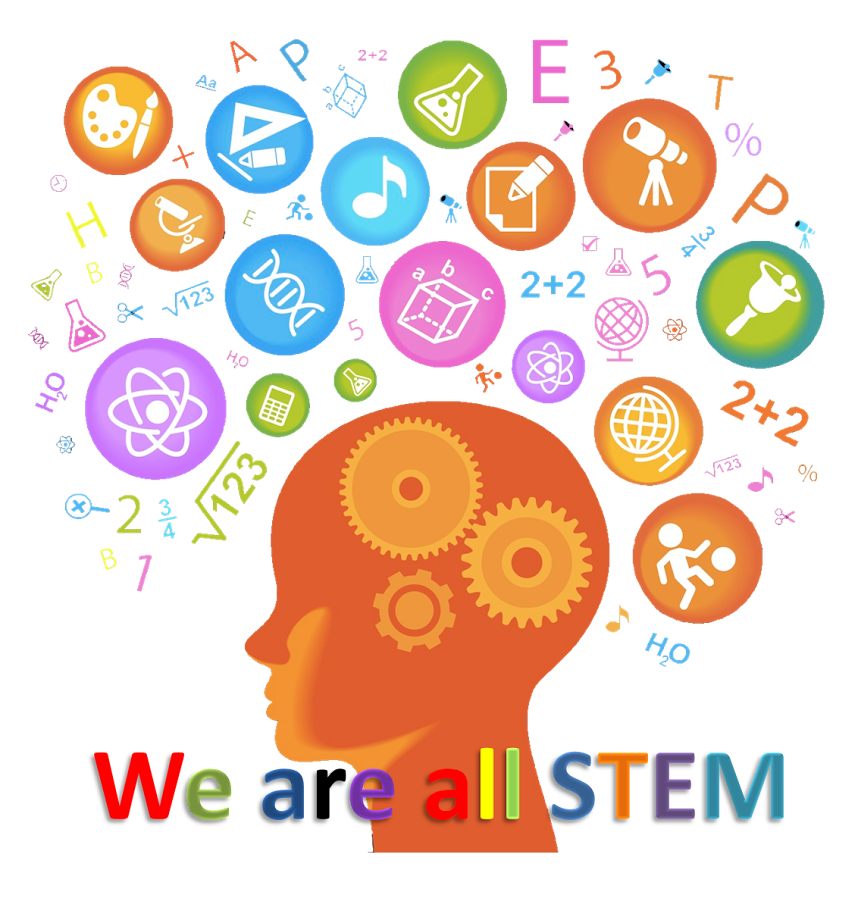1) How would you describe STEM
education to a friend or family member in informal conversation?
Understanding the acronyms for STEM helps break down the meaning of what it stands for. Science, Technology, Engineering, and Mathematics are multiple disciplines. I describe STEM as a technique for multiple disciplines to work together through hands-on learning to enhance problem-solving and critical thinking skills. For example, I had my students create a Wind Turbine using the 12-steps of the engineering design process. The students were faced with the problem that they had to create a Wind Turbine with a limited amount of materials and time. They had to brainstorm ideas, research and generate ideas, identify the criteria and constraints, explore possibilities, select an approach, develop a design proposal, make a model or prototype, test and evaluate, refine the design, create or make a solution, and communicate the whole process and results. This helps students apply technology, mathematics, science, and engineering to make a complete product for a purpose.
Understanding the acronyms for STEM helps break down the meaning of what it stands for. Science, Technology, Engineering, and Mathematics are multiple disciplines. I describe STEM as a technique for multiple disciplines to work together through hands-on learning to enhance problem-solving and critical thinking skills. For example, I had my students create a Wind Turbine using the 12-steps of the engineering design process. The students were faced with the problem that they had to create a Wind Turbine with a limited amount of materials and time. They had to brainstorm ideas, research and generate ideas, identify the criteria and constraints, explore possibilities, select an approach, develop a design proposal, make a model or prototype, test and evaluate, refine the design, create or make a solution, and communicate the whole process and results. This helps students apply technology, mathematics, science, and engineering to make a complete product for a purpose.
2) Why do you think STEM education is
(or is not) important?
I do believe that STEM is important because students need
to have the ability to break down information into chunks to solve problems. We
need to challenge students to reach their potential. All of these fields are
growing that are in high demand so we are preparing our students to take
advantage of opportunities that could shape the future.
3) What is the value of incorporating
or enhancing STEM in public education.
The public education system has such of a diverse
environment where everyone learns differently. STEM provides that opportunity
to meet the needs of all learners. It also provides opportunities for students
to take advantage of programs, scholarships, and knowledge to help further
their education. These are all important fields that work together and have a
strong impact on our society. It is fields that we have lacked in and have seen
a decrease in enrollment with an increase in drop-outs so we need to help
provide a picture to students of what it could be like and how to get there. We
need to help students understand the potential these fields have by allowing
the students to be independent thinkers. Students should be responsible for
their education and their future.
After Research:
After Research:
1) How were your initial thoughts reinforced by the resources
you explored?
It does confirm that STEM prepares
the next-generation of students to succeed in life. It teaches students to
critically think and solve problems. The skills help students take advantage of
opportunities that appear. STEM includes all friends that solve problems and
creates a multi-cultural environment. By allowing students the opportunity to
perform hands-on activities and understand different perspectives, we are
allowing our students to grow and be included in the competitive market.
2) What are some additional reasons to incorporate STEM
education into your planning and instructions?
The STEM workforce needs to become
more diverse since it is not as diverse now as compared to 2001. There is
encouragement to target women and minority students that may have been
overlooked in schools nationwide. It also allows students to have a global
perspective that is valuable for solving problems and enhancing their education
experience. By allowing students to investigate the world, recognize multiple
perspectives, communicate with diverse audiences, and take action; it provides
global competition and student growth. When we think that 69% of high school
graduates are not ready for a college-level science class then we understand
that we need to enhance the areas that our students struggle the most.
Social Sites:
Personally I have mixed feelings about using social sites for STEM. I see the dangers and the lack of responsibility for the students. I understand that social sites can be used to spread information faster and help students develop relationships with programs, clubs, organizations, and people who have experiences in fields that they are learning about and/or interested in. It does seem like an interesting idea of what they can do, but I have noticed students using social sites more for personal use that is no benefit to the class time, which is why it has to be protected and regulated.
Social Sites:
Personally I have mixed feelings about using social sites for STEM. I see the dangers and the lack of responsibility for the students. I understand that social sites can be used to spread information faster and help students develop relationships with programs, clubs, organizations, and people who have experiences in fields that they are learning about and/or interested in. It does seem like an interesting idea of what they can do, but I have noticed students using social sites more for personal use that is no benefit to the class time, which is why it has to be protected and regulated.
